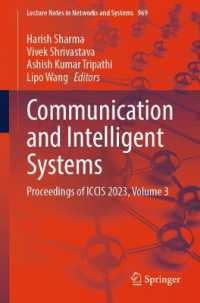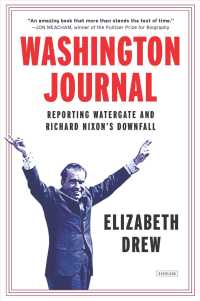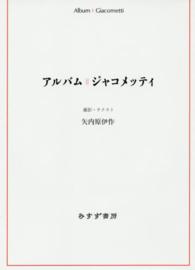- ホーム
- > 洋書
- > 英文書
- > History / World
Full Description
The Cheese and the Worms is an incisive study of popular culture in the sixteenth century as seen through the eyes of one man, the miller known as Menocchio, who was accused of heresy during the Inquisition and sentenced to death. Carlo Ginzburg uses the trial records to illustrate the religious and social conflicts of the society Menocchio lived in. For a common miller, Menocchio was surprisingly literate. In his trial testimony he made references to more than a dozen books, including the Bible, Boccaccio's Decameron, Mandeville's Travels, and a "mysterious" book that may have been the Koran. And what he read he recast in terms familiar to him, as in his own version of the creation: "All was chaos, that is earth, air, water, and fire were mixed together; and of that bulk a mass formed-just as cheese is made out of milk-and worms appeared in it, and these were the angels." Ginzburg's influential book has been widely regarded as an early example of the analytic, case-oriented approach known as microhistory. In a thoughtful new preface, Ginzburg offers his own corollary to Menocchio's story as he considers the discrepancy between the intentions of the writer and what gets written.
The Italian miller's story and Ginzburg's work continue to resonate with modern readers because they focus on how oral and written culture are inextricably linked. Menocchio's 500-year-old challenge to authority remains evocative and vital today.
Contents
Preface to the 2013 Edition
Translators' Note
Preface to the English Edition
Preface to the Italian Edition
Acknowledgments
1. Menocchio
2. The town
3. First interrogation
4. "Possessed?"
5. From Concordia to Portogruaro
6. "To speak out against his superiors"
7. An archaic society
8. "They oppress the poor"
9. "Lutherans" and Anabaptists
10. A miller, a painter, a buffoon
11. "My opinions came out of my head"
12. The books
13. Readers of the town
14. Printed pages and "fantastic opinions"
15. Blind alley?
16. The temple of the virgins
17. The funeral of the Madonna
18. The father of Christ
19. Judgment day
20. Mandeville
21. Pigmies and cannibals
22. "God of nature"
23. The three rings
24. Written culture and oral culture
25. Chaos
26. Dialogue
27. Mythical cheeses and real cheeses
28. The monopoly over knowledge
29. The words of the Fioretto
30. The function of metaphors
31. "Master," "steward," and "workers"
32. An hypothesis
33. Peasant religion
34. The soul
35. "I don't know"
36. Two spirits, seven souls, four elements
37. The flight of an idea
38. Contradictions
39. Paradise
40. A new "way of life"
41. "To kill priests"
42. A "new world"
43. End of the interrogations
44. Letter to the judges
45. Rhetorical figures
46. First sentence
47. Prison
48. Return to the town
49. Denunciations
50. Nocturnal dialogue with the Jew
51. Second trial
52. "Fantasies"
53. "Vanities and dreams"
54. "Oh great, omnipotent, and holy God . . ."
55. "If only I had died when I was fifteen"
56. Second sentence
57. Torture
58. Scolio
59. Pellegrino Baroni
60. Two millers
61. Dominant culture and subordinate culture
62. Letters from Rome
Notes
Index of Names







